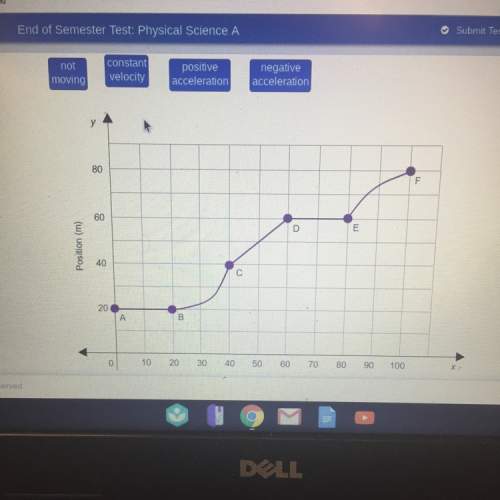
Physics, 15.07.2019 19:50 valenciafaithtorres
Amass m = 17 kg is pulled along a horizontal floor with no friction for a distance d =5.8 m. then the mass is pulled up an incline that makes an angle î¸ = 35â° with the horizontal and has a coefficient of kinetic friction î¼k = 0.39. the entire time the massless rope used to pull the block is pulled parallel to the incline at an angle of î¸ = 35â° (thus on the incline it is parallel to the surface) and has a tension t =88 n. 1) what is the work done by tension before the block goes up the incline? (on the horizontal surface.) 418.1 j submit 2) what is the speed of the block right before it begins to travel up the incline? 7.01 m/s submit 3) what is the work done by friction after the block has traveled a distance x = 3 m up the incline? (where x is measured along the incline.) -159.67 j submit 4) what is the work done by gravity after the block has traveled a distance x = 3 m up the incline? (where x is measured along the incline.) -286.67 j submit 5) how far up the incline does the block travel before coming to rest? (measured along the incline.)

Answers: 1


Another question on Physics


Physics, 22.06.2019 14:30
Two steel balls, each of mass m, are welded to a light rod of length l and negligible mass and are initially at rest on a smooth horizontal surface. a horizontal force of magnitude f is suddenly applied to the rod as shown. determine (a) the instantaneous acceleration a of the mass center g and (b) the corresponding rate at which the angular velocity of the assembly about g is changing with time.
Answers: 2

Physics, 22.06.2019 16:00
The amount of potential energy possessed by an elevated object is equal to what?
Answers: 1

Physics, 22.06.2019 17:20
In a system with only a single force acting upon a body, what is the relationship between the change in kinetic energy and the work done by the force? answers: work is equal to the change in kinetic energy.work depends on the square of the change in potential energy.work is equal to the negative of the change in kinetic energy.work is equal to the square of the change in kinetic energy
Answers: 2
You know the right answer?
Amass m = 17 kg is pulled along a horizontal floor with no friction for a distance d =5.8 m. then th...
Questions



History, 28.01.2021 19:10

Mathematics, 28.01.2021 19:10

Arts, 28.01.2021 19:10


Mathematics, 28.01.2021 19:10



Mathematics, 28.01.2021 19:10


Mathematics, 28.01.2021 19:10

Mathematics, 28.01.2021 19:10


Biology, 28.01.2021 19:10


English, 28.01.2021 19:10

English, 28.01.2021 19:10


Health, 28.01.2021 19:10




